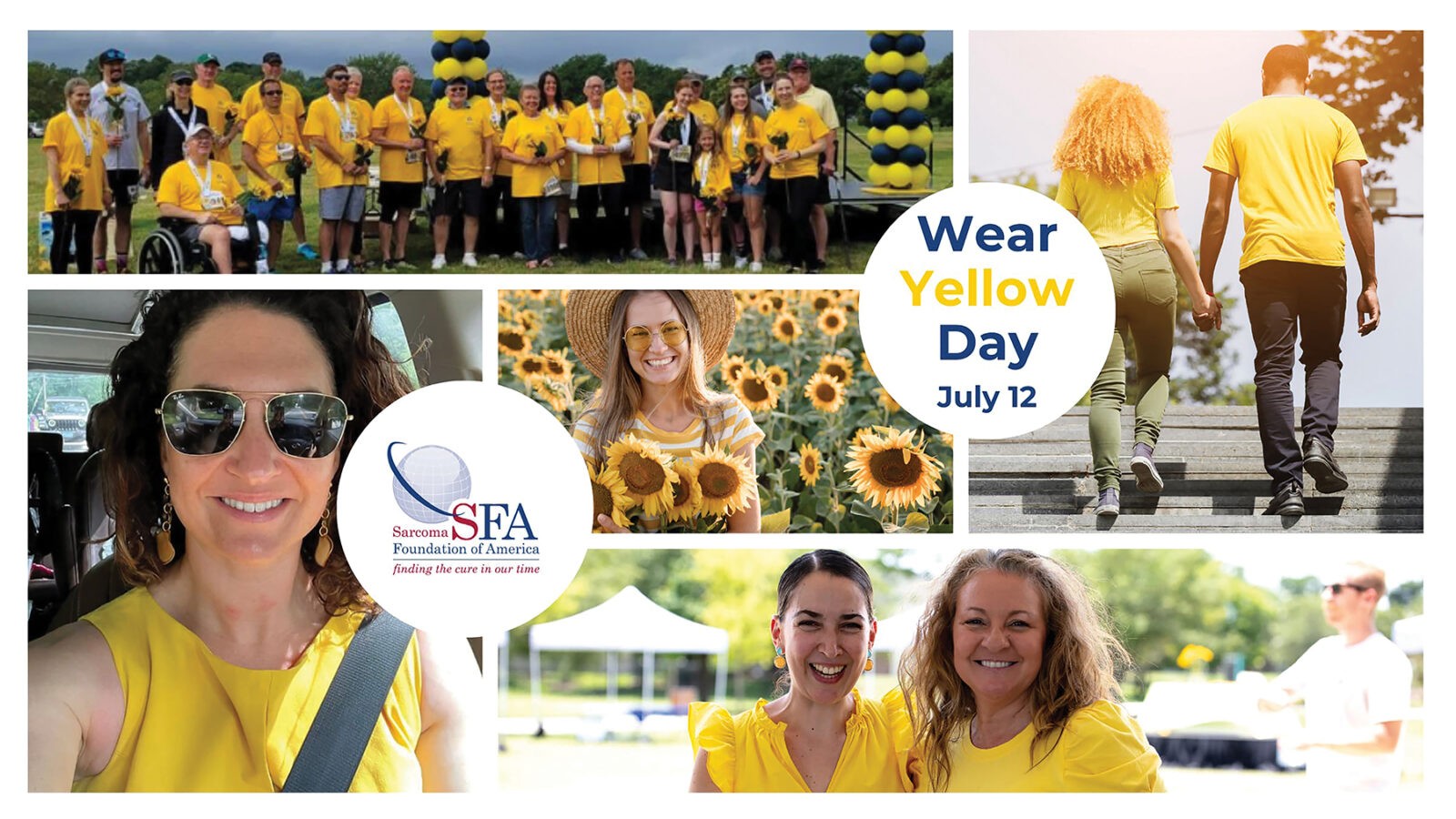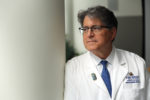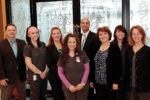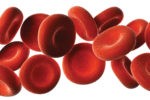July is SARCOMA Awareness
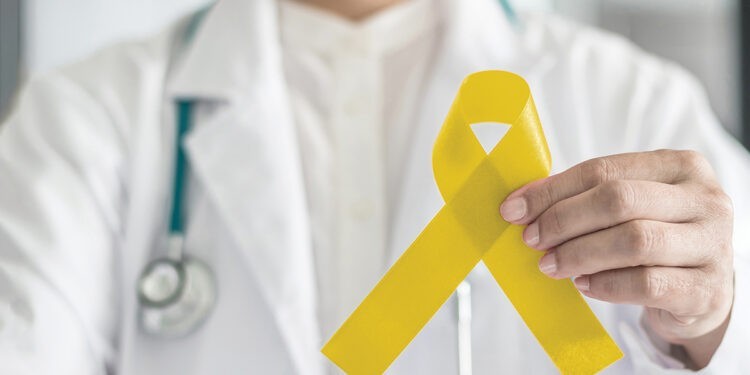
Story by Sarcoma Foundation of America
A cancer diagnosis is never easy. Rare cancers like sarcoma, however, bring additional challenges. Many people haven’t even heardof sarcoma until they are diagnosed.
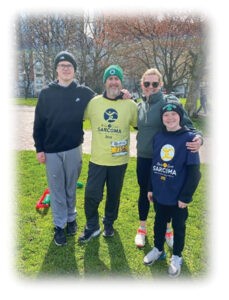
Mike Cacioppo (second from left) with his family at the 2024 Race to Cure Sarcoma Boston on April 21st.
The story of Mike Cacioppo, who was diagnosed with osteosarcoma in October 2021, illustrates some of the obstacles and challenges people living with sarcoma face and why we need to amplify our collective voice to advocate for more research funding and raise awareness about sarcoma.
Mike’s journey began when he noticed a small bump on the outside of his right ankle in the summer of 2021. Like many of us would, he initially dismissed it as a minor inconvenience, attributing it to normal wear and tear while exercising. However, as time passed, the persistent discomfort prompted him to seek medical attention. What followed was a whirlwind of diagnostic tests, ultimately leading to his diagnosis.
Navigating the complexities of treatment, Mike embarked on a challenging path that included rounds of chemotherapy and eventually an amputation. Mike’s journey underscores the urgent need for increased awareness and funding for sarcoma research.
While hope is present and progress is in action, the sarcoma community continues to tackle the need for more research funding, lack of awareness, and more and better treatment options. Despite advancements in medical technology, treatment options for sarcoma patients like Mike have remained largely unchanged for decades.
Patients have often stated that they have had trouble finding a provider who understands and specializes in treating patients with sarcoma. Family and friends don’t often understand what sarcoma is, which can make getting a patient’s emotional needs met difficult. These obstacles can lead to feeling helpless, isolated, and alone. Mike spoke of these feelings while talking about his sarcoma journey at SFA’s Race to Cure Sarcoma Boston event.
“You know, for me, sometimes you do feel like you’re alone. But you have to realize that you’re not. And every day that you can do something for yourself, something for the people around you, is so important.”
SFA’s mission is to improve outcomes for people diagnosed with sarcoma and increase the number of survivors – by funding and advancing research, educating, and providing resources for people diagnosed with sarcoma, advocating on behalf of the community, bringing together the collective sarcoma voice, and growing awareness about the disease.
Each year during the month of July, Sarcoma Awareness Month, we work to amplify the needs of people diagnosed with sarcoma and to advocate for more research funding and raise awareness about the disease.
Together this July, join us to advance progress and provide more resources to sarcoma patients like Mike.

Sarcoma survivors, caregivers, and members of the sarcoma community wear yellow to promote sarcoma awareness. Take part by sharing a photo of yourself wearing yellow on July 12.

On July 26, buildings and monuments across the country such as Cleveland’s Terminal Tower will light up yellow one evening for Sarcoma exteriors.
What Can I Do to Help?
We invite you to join the thousands of sarcoma voices across the country and take action to help us raise awareness about sarcoma during Sarcoma Awareness Month. Share photos of yourself wearing yellow for our Wear Yellow Day on July 12, or join our National Race to Cure Sarcoma on July 20, either in-person in Washington, DC, or virtually. Take part in SFA’s Sarcoma Hill Day on July 18, or ask local buildings and monuments to join Niagara Falls, Cleveland’s Terminal Towers, Milwaukee City Hall, and other locations across the country to light their exteriors yellow for our Light Up for Sarcoma campaign. You can also order personalized yard signs to place in front of your home to raise awareness in your neighborhood all July.
Sarcoma at a Glance
What is Sarcoma?
A rare form of cancer of the bone or connective soft tissue–nerves, muscles, joints, fat, and blood vessels. Scientists have identified more than 100 subtypes of sarcoma based on where and how they first develop. Because bone and soft tissue are spread across the body, sarcoma can appear anywhere.
How Common Is It?
Sarcoma makes up about 1% of adult cancers and about 15% – 20% of childhood cancers. This year, an estimated 18,000 people will be diagnosed with sarcoma and an estimated 7,250 people will die from the disease.
What Are the Signs?
Sarcomas often develop deep in the body, so there are no signs until it has advanced. While lumps and bumps, even painless ones, are often harmless, they may also be a sign of sarcoma. If you have one get it checked by a medical professional to be sure
For more information on Sarcoma Foundation of America
or how to help take action please visit
https://www.curesarcoma.org/sarcoma-awareness-month/
For information on the National Race to Cure Sarcoma on July 20th please visit https://www.curesarcoma.org/race/
and for information on yard signs mentioned in the article visit https://www.zazzle.com/store/sarcomafoundation/products
